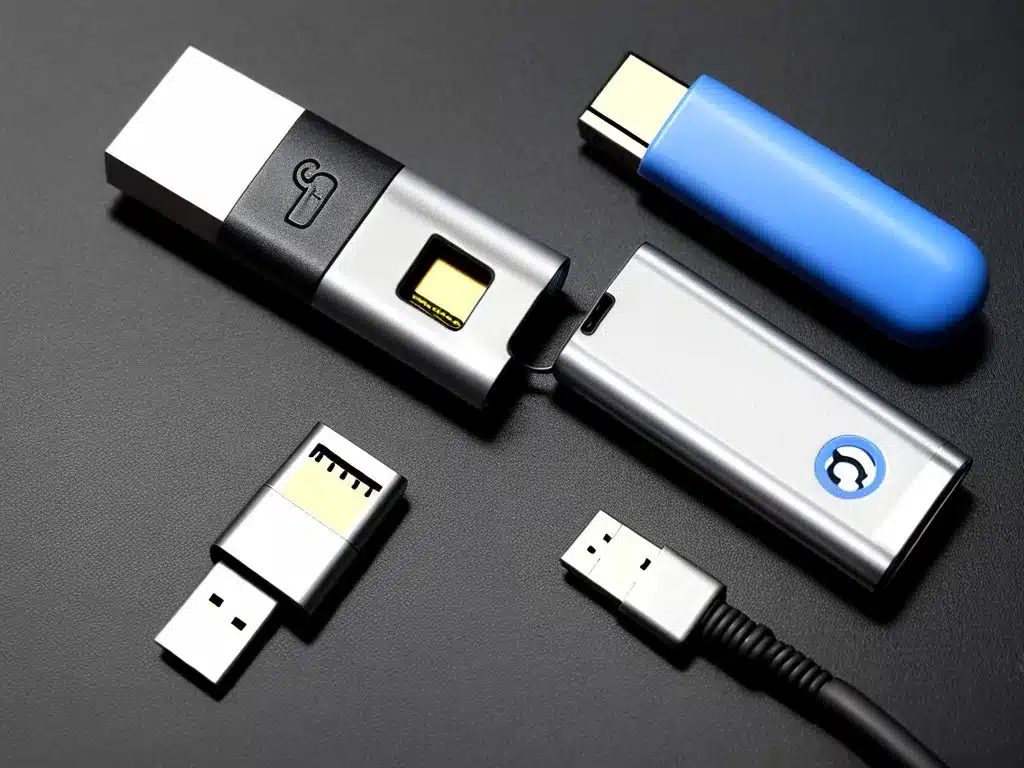Losing important files from a USB drive can be extremely frustrating. As I’ve discovered firsthand, when a USB drive stops working or fails to mount on my computer, the data stored on it may seem lost forever. However, with the right tools and techniques, I’ve been able to successfully recover lost data from dead USB drives multiple times.
In this article, I will provide a step-by-step guide on how to recover lost data from a dead USB drive this year. I will cover various data recovery methods, from DIY solutions to professional services, that you can use to rescue your valuable photos, documents, videos, and other files.
Determine Why The USB Drive Is Not Detected
The first step is to diagnose the problem and determine why your USB drive is not being detected by your computer. Here are some common reasons a USB drive can fail:
- Corrupted drive format – The drive may be formatted with an unsupported file system like exFAT or NTFS. Reformatting it can fix this.
- Damaged port or cable – A broken USB port or cable could prevent detection. Try other ports and cables.
- Malware infection – Viruses or malware may corrupt the USB drive firmware and software.
- Physical damage – Dropping or mishandling the drive can damage internal components.
- Worn-out drive – USB drives have limited rewrite cycles. Old drives eventually fail.
If the drive lights up but isn’t detected, the issue is likely software-related. But if the drive doesn’t light up at all, there may be hardware damage involved.
Try Mounting the USB Drive on Other Computers
Before attempting data recovery, try connecting the USB drive to other computers and devices to see if it is detected.
I recommend trying:
- Different ports on the same computer
- Other computers or laptops
- Linux operating system via live boot disk
- External USB hubs and docking stations
If the drive mounts successfully on a different setup, you can simply copy your files to another device. But if it isn’t detected anywhere, then the drive is likely dead and data recovery software is your next best option.
Use Data Recovery Software
Data recovery software is the best DIY method for retrieving data from a dead USB drive. These programs can scan drives and recover lost data even if the drive isn’t detected by your OS.
Some top data recovery programs include:
- Stellar Data Recovery – Full-featured recovery tool for Windows and Mac.
- EaseUS Data Recovery – Has a free limited version.
- Disk Drill – Easy to use freemium data recovery for Mac and Windows.
Many of these programs offer a free trial or demo so you can see if your files can be recovered before purchasing. They can recover data from hard drives, USB drives, SD cards, etc.
Follow these general steps when using data recovery software:
- Download and install the program. Connect the USB drive if detected.
- Select the USB drive you want to recover files from.
- Scan the drive. This can take several hours for a full scan.
- Preview and select the files you wish to recover.
- Choose a location to save the recovered files.
- Restore your files. Avoid saving to the same USB drive.
Some paid programs boast over 90% success rates for dead drive data recovery if there is no physical damage.
Use a Local Data Recovery Service
If DIY software can’t help extract your files, utilizing a professional data recovery service may be your last resort to successfully recover the data.
Data recovery experts have specialized tools and clean room facilities to physically repair drives and recover data. The process involves:
- Assessing the drive failure method
- Disassembling the drive in a dust-free cleanroom
- Repairing or replacing damaged components like control boards
- Using forensic tools to image and extract raw data
- Rebuilding the drive or transferring data to a new drive
This physical data recovery has much higher success rates for mechanically failed drives. However, it is a costly process – $1000 or more in many cases. But important personal or business files may be worth the expense.
Prevent Future USB Drive Failure
In conclusion, recovering lost data from a dead USB drive is possible using DIY, professional, or paid solutions. But it’s much better to avoid drive failures in the first place.
Here are some tips to extend the lifespan of your USB drives:
- Handle them gently – Avoid drops, liquid contact, heat, and magnets.
- Safely eject before unplugging – This prevents file and drive corruption.
- Use high-quality drives – Look for durable, name brand drives with long warranties.
- Limit unnecessary writes – Constantly writing and erasing files wears out the memory.
- Keep malware off – Scan for viruses and don’t keep suspicious files.
- Make file backups – Always maintain backups of your USB drive on other devices.
Losing files is a harsh reality in the digital age. But you’re now equipped with several techniques to potentially recover lost data from a dead USB drive. Just be sure to regularly backup your data to minimize reliance on drive recovery methods.













